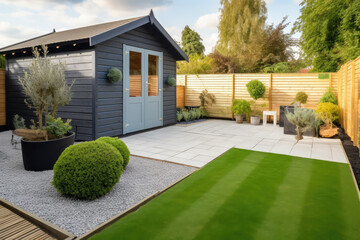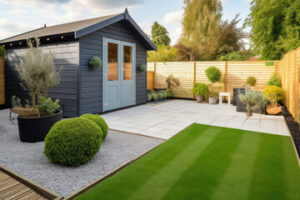Real estate is land and any buildings on that land, including natural resources like crops, water, or minerals. It’s the most common form of direct investment. For more information just visit https://www.scamrisk.com/one-day-flip/.
Residential real estate includes single-family homes, townhouses, and condominiums. Commercial real estate includes strip malls, office buildings, hotels, and schools. Industrial real estate contains factories and warehouses.

Residential real estate includes structures that house individuals and families, such as single-family homes, townhouses, condominiums, and multifamily apartment buildings. Often, people invest in residential real estate to make money, either by renting it out or selling it for a higher price. However, many homeowners also purchase residential property as a place to live.
While the types of properties classified as real estate differ, all real estate is considered a valuable asset. It is a common investment vehicle with several benefits, including rental income, capital gains, and appreciation.
Investing in real estate involves a lot of work, but the rewards can be significant. Some investors use their investment earnings to fund retirement, while others use it to buy another home or build wealth. Regardless of your goals, there are many ways to invest in real estate, such as through real estate investment trusts (REITs), online investment platforms, or direct investments.
There are many benefits to investing in residential real estate, including low prices and steady demand. Additionally, there is a higher potential for rental income than commercial property, and it can be easier to find tenants. However, it is important to consider your risk tolerance and investment goals before deciding.
Unlike commercial property, which can include offices, retail buildings, power centers, apartments, and warehouses, residential properties only contain housing units. Moreover, they are usually smaller and less expensive than commercial properties.
In addition, the zoning laws that govern residential real estate are more lenient than those that govern commercial property. This means it is easier to lease out a residential property and start your journey to becoming a landlord.
It is also worth noting that the leases on residential real estate are typically longer than those on commercial property. This can lead to higher cash flow and a more stable investment opportunity, but it also comes with increased risk if your residents move out or decide to stop paying rent. Additionally, if your residents are new to the area, it can take longer to find replacements.
Commercial real estate (or CRE) includes structures used for business, such as malls, office buildings, warehouses, and even package sorting facilities. It is the largest real estate asset class with a market value of $20.7 trillion1. Residential property, such as single-family homes, is the second largest asset class with a market value of $7.9 trillion2.
Commercial properties can be a great source of income, whether through rent or sales. They can also be a great investment for investors seeking a higher return on their assets than they would receive from purchasing and renting out a single-family home.
However, there are a few things to remember before investing in commercial property. First, buying and operating commercial property can be more expensive than residential property. Secondly, commercial tenants typically sign much longer leases than residential tenants. This can lead to a steady cash flow for a longer period.
Another important thing to consider when buying and operating commercial property is that it is often subject to more regulations than residential property. There are stricter zoning laws, and getting building permits for commercial properties can be harder. Lastly, it cannot be easy to sell commercial property quickly compared to a single-family home.
One of the most important aspects to consider when investing in commercial real estate is that it will likely take more upfront capital to purchase and operate. This is because the square footage of a commercial property is typically much larger than that of a single-family home. Additionally, it can be more expensive to maintain a commercial property because it requires more infrastructure and technology.
Investing in commercial or residential real estate depends on your financial situation and risk tolerance. While commercial property can provide a higher return, weighing your options before deciding is important. No matter what you choose, it is important to consult an experienced real estate broker to help you find the right property for your investment needs.
Industrial real estate has made countless headlines in recent years. It was touted as the next big thing in commercial real estate (CRE) due to e-commerce expansion and corporate interest in reshoring production in search of supply chain resiliency.
Some zoning authorities break industrial real estate into subsets such as light and heavy manufacturing, warehouse space, large and small distribution centers, logistics facilities, and so-called “flex” space that offers industrial and other uses (such as office and retail). Industrial property can range from 10,000 to 1,000,000 square feet or more. It may be occupied by a single tenant or multiple tenants ranging from locally-oriented businesses such as auto repair shops or CrossFit studios to global corporations like Amazon and Walmart distribution centers.
Whether as a stand-alone investment or as an addition to an existing portfolio, industrial real estate often offers investors better returns than other CRE sectors. While office and retail space typically see an ROI of about 5%, industrial spaces yield 6-8%.
One of the main reasons for this is that industrial real estate tends to have lower vacancy rates than other types of CRE. Warehousing and distribution warehouses, in particular, are in high demand thanks to the growing e-commerce sector’s need for same-day and next-day delivery. Additionally, many industrial spaces can be outfitted to serve a variety of purposes and can accommodate tenants with unique demands – such as data centers.
In addition, the leases on industrial properties tend to be longer than other commercial spaces. This reduces the frequency and cost of renovations and helps to stabilize a property’s cash flow. For owner-occupiers, this can help to maintain a consistent operating budget throughout the lease.
Lastly, industrial real estate is often located near key transportation hubs. This includes seaports, highway and rail junctions, and airports. This helps reduce the time and cost of shipping goods and allows for easier access by customers and suppliers. It also increases the value of industrial properties and makes them more attractive to potential investors.
Land real estate can be a good investment as it’s usually less expensive than other real estate types. It can also offer a steady, long-term income, making it an ideal option for people who want to invest their money. Land investment is popular in America, where undeveloped or vacant land is abundant. However, investing in land comes with some risks, including environmental concerns and other potential issues.
Land refers to the earth’s surface and underlying soil, including all natural objects like trees, minerals, and water. Depending on the type of land, it may contain important mineral deposits or have unique geographic features. Moreover, it can also hold valuable wildlife and plants. Land is typically an irreplaceable asset and can be a source of wealth for many individuals.
Knowing the difference between real estate and land is crucial to making informed investment decisions. The terms are often used interchangeably, but they have different meanings. Real estate refers to land plus any permanent artificial additions. This can include buildings, roads, or fences. Moreover, it can be classified as “improved” or “unimproved.” The former refers to anything that has been added to the land.
There are six major categories of real estate. These categories are residential, commercial, industrial, land, and special-purpose real estate. Residential real estate includes apartments, houses, and condominiums. Its value can be affected by various factors, such as location, demographics, and zoning laws.
Commercial real estate includes malls, shopping centers, and office spaces. Its value is affected by the economy and demand for space. Investors should keep an eye on trends in commercial real estate to spot opportunities.
Industrial real estate is used for manufacturing, processing, and storing goods. It is an essential part of the economy and can provide jobs to the local population. It is also a key driver of economic growth.
Vacant land is a type of real estate that has yet to be subdivided into lots and has no sewers, streets, or utilities. Vacant land is often very cheap to buy but can be challenging to develop. Developers profit by purchasing raw land, rezoning it, and building buildings on the property. They may also rent or sell the finished product to end-users.


